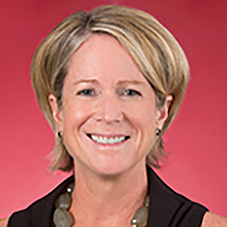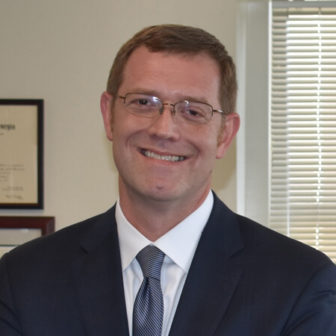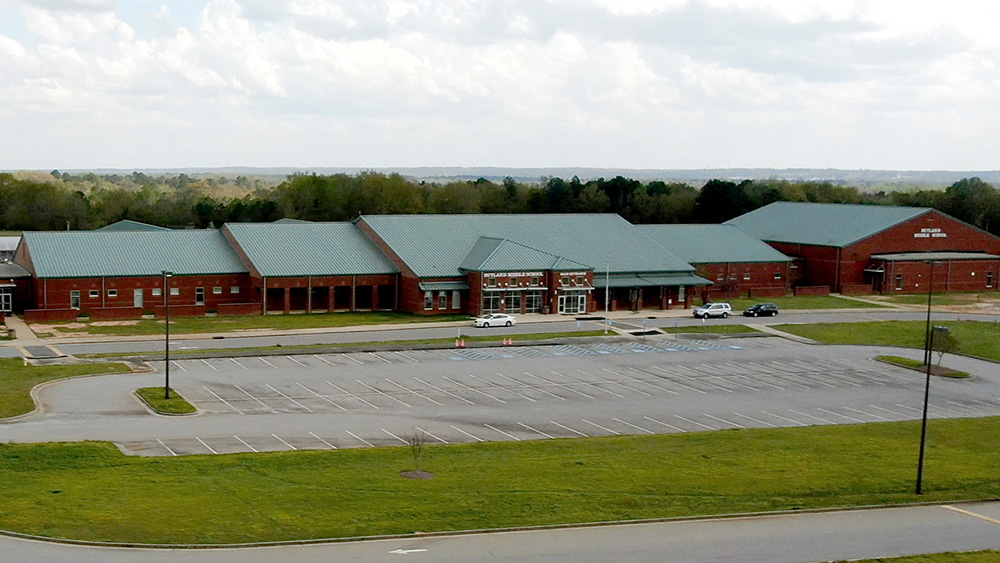In January, Sharral Dean, a therapist at the Family Counseling Center of Central Georgia, was seeing about 30 young clients a week. At any given time, five to seven of them were what Dean calls “at risk” — more likely to experience violence at home, at higher risk for depression, anxiety, fighting in school and entering the juvenile justice system.
Since the onset of the COVID-19 pandemic and the shelter-in-place orders that came with it, many of her clients have shifted to receiving therapy by videoconference. But not her at-risk ones — they simply stopped showing up. “We’re not hearing from these kids,” she said, and “it’s a great concern.”
What worries Dean and Patty Gibbs, the center’s executive director, is that for these youths, the silence reflects more than a digital divide. “Without school, where are those kids going, and what are they doing?” Gibbs said. She’s seen the reports of rising domestic violence rates since the onset of the pandemic; she fears the kids who have already seen too much violence are now seeing even more.
To youth at risk for experiencing violence or other trauma at home, the school closures translate to losses that go well beyond missed opportunities for learning and in-person graduations and proms. School’s role as a source of nutrition for many youth has been well-documented — but school may also be the only setting that addresses a vulnerable child’s need for good role models, for safety, for redemption.
For kids who are safer at school than at home, what happens when school shuts down?
Who’s at risk?
A child’s risk for experiencing violence and other trauma at home starts with poverty. Financial hardship is one of the most important risk factors for childhood trauma, and it is one of many Bibb County’s children face: 37% live in poverty, well above the state’s average of 21%. Bibb County is the largest in the Macon metro area, two hours south of Atlanta. In the best of times, families suffering from financial strain are more likely to suffer from conflict within the home and have fewer resources to invest in their children.
In Georgia and throughout the nation, poverty disproportionately affects people of color, largely due to inequities built into American banking, housing and labor systems. Because of its close ties to poverty, the risk for childhood trauma follows the same pattern.
Pandemic conditions, which also disproportionately affect people of color, only increase the stressful circumstances of poverty: job and wage losses further depress low incomes; the elimination of most public gatherings translates to fewer social outlets for both adults and children; and many families are facing the illness or death of loved ones.
That makes home a pressure cooker for many families — one that youth may be unable to escape under shelter-in-place orders.
Mary Marx is the executive director for Pace Center for Girls, a nonprofit organization that provides individual and group counseling and case management to girls at Macon’s Westside High School who are involved with the justice system. For many of the girls her organization works with, “home is not necessarily the safest place for them, but yet they're being asked to shelter at home,” she said.
When school is safer than home
Under normal circumstances, school offers a respite to many youth whose home environments are unstable and sometimes dangerous. For a lot of kids, the teachers, coaches, counselors and administrators at school “were the only trusted adults they got to see” each day, says David Cooke, Bibb County’s district attorney and an advocate for juvenile justice reform. Neighbors and community volunteers may also play a constructive role in students’ lives by acting as positive role models. In multiple studies, access to a trusted adult has been shown to reduce the risk of negative downstream health effects of childhood trauma.
But the positive role that a school’s faculty and staff can play in a child’s life goes beyond offering support and modeling. School employees also play a key role in identifying and reporting abuse and trauma among students. According to federal data, 21% of abuse reports to child protective services originate from education personnel.
With schools closed, “kids who are being abused by a family member — not only are they stuck with their abuser, but they don't have access to the trusted adult to make an outcry, or even to their friend to vent,” Cooke said.

Pace Center for Girls
Mary Marx
But with schools closed and teachers only seeing what students share on screen, “you no longer have eyes on these kids,” Marx said.
Calls to child abuse hotlines have decreased nationwide anywhere from 15% to 50% due to school closures — not because abuse cases are decreasing, but because they are not being reported. Since Georgia’s emergency declaration was made in mid-March, reports of suspected abuse or neglect made to the Georgia Division of Family and Children Services have decreased by about 40%, and the agency’s Bibb County office has received 27% fewer reports. A representative of Navicent Health said its pediatric emergency department has not seen an increase in youth victims of violence or abuse since the beginning of the pandemic; Navicent declined an interview on behalf of the staff of Crescent House, its center for pediatric victims of abuse.
Witnessing domestic violence can be deeply traumatizing to children, and there are signals more children are being exposed to violence at home. According to Dee Simms, executive director of Macon’s Crisis Line and Safe House, the demand for shelter from domestic violence has increased since the start of the pandemic, and Cooke says requests for temporary protective orders from domestic abusers and stalkers have shot up.
Chris Carter, the minister at Healing Experience Ministries in the Pleasant Hill district of Macon, has been hearing of increased verbal and physical abuse among members of his community. He is deeply worried about the impact on children of their parents’ pandemic-related trauma.
“One of my main concerns is negligence,” he said. As a result of parental exhaustion and a dearth of safe neighborhood gathering places, “lots of children in our neighborhoods are just walking the street on their own,” he said, putting them at risk for making or finding trouble.
Neighborhood internet access is limited, and reduced bus schedules and increasingly tenuous employment have made it difficult for many parents to pick up laptop computers and access wifi hotspots offered by schools, Carter said. Without an internet connection, many youth in distress have no way to ask for support.
“A lot of the trauma that's occurring in homes right now, we may not hear about it or see about it,” Sharral Dean said. “We're unable to really go in and try to give them some help.”
In addition to offering an important mechanism for reporting abuse, school is a place where children with unstable home lives can take part in activities that may be critically important to their sense of purpose.
“What if the only thing keeping you sane is school sports?” Cooke said. “What if it's chorus or band or drama?” When the thing that gives kids structure and identity is gone, he said, they may feel that all they have left is the streets.
Several studies have tied participation in after-school activities to improved outcomes in high-risk children. In a 2017 study, investigators tried to understand what led some children who had experienced family adversity to flourish anyway. They found that a higher proportion of children who were thriving were doing things outside the house that fostered social connectedness, like volunteering, working for pay and participating in extracurricular activities. A separate study of Alaskan youth suggested that after-school programs reduce the risk of youth substance abuse and delinquency.
“In many cases, after-school sports or any of those type of activities [are] a refuge,” Marx said. She worries about where kids go when their refuge is gone.
School trouble can be a pathway to care
Children exposed to trauma often show their distress by acting out, leading to trouble in school. That makes school an important site for identifying kids who need help and connecting them and their families to the services they need to build healthy coping skills for the future, including family counseling, mentoring, community service and mediation programs. Macon’s School-Justice Partnership does exactly that, Cooke said — but it can only do it when school is in session.

David Cooke
When Bibb County schools were closed in March, 300 students had been referred to counseling through the partnership, putting the program on track to double the number of students enrolled over the previous year — its first. Cooke had also been eagerly anticipating the rollout of the partnership’s second phase, which aims to keep youth out of detention facilities — a high priority because of how strongly detention predicts future interactions with the justice system, even if they get in trouble outside school.
A feature of the school-justice partnership, he said, is a school disciplinary staff sensitized to the root causes of youth behavioral problems and primed to respond to disciplinary run-ins by asking themselves, “What might be happening in a child’s life to make them behave this way?”
“That's not to say that, say, a Bibb County deputy wouldn't use discretion. But in the school-justice partnership, it’s mandated,” Cooke said.
With schools closed, increasingly distressed youth are now acting out in other places. According to Bibb County Juvenile Prosecutor Ché Young, youth criminal offenses have been on the rise since school closures began.
“Faced with few alternatives for ways to fill their time and parents who are working and unable to supervise them, they’re getting into trouble with the law,” she wrote in a statement.
And the law does not make referrals to the school-justice partnership — which means that while already-enrolled students are still receiving services, no new referrals have been made since schools first closed.
That means not only are youth offenders and their families missing out on the programs designed to address the root causes of their behavior — like the counseling Dean provides — but they are also facing facility detentions that would be avoidable had the partnership’s progress not been halted by the pandemic-related pause in justice reform. That’s particularly concerning because of fears that conditions and educational opportunities in these facilities have deteriorated during the pandemic.
“I'm extremely worried about what this looks like inside of juvenile detention facilities that are already complicated spaces where education oftentimes isn't the best,” said Robert Simmons, executive director of the Black Educators Initiative at Urban Teachers.
How communities are trying
Amid growing concerns about the risks school closures pose to vulnerable children, educators and child advocates are seeking ways to reduce some of the negative impact. For both children and parents, chronic hunger damages health in the long term. Feeding families during the pandemic is one way to reduce the consequences of this particular trauma. Bibb County schools have expanded an emergency meal program to improve food access for area children, and in early May, the largest food distribution initiative ever in Bibb County provided 60,000 meals to more than 7,000 people, says George McCanless, president and CEO of the United Way of Central Georgia.
There are also signs that in response to pandemic-related social distancing mandates, juvenile detentions have been decreasing on a national scale. According to a 30-state survey of detention data, there was a 24% decrease in juvenile detention populations between March 1 and April 1, mostly due to a decrease in daily admissions.
“This may be an opportunity for the justice system to actually right itself” by seeking alternatives to detention for low-level offenses like runaway behavior and substance abuse — offenses that should signal kids “need access to a set of services in our community, and not actually confinement,” Pace’s Marx said.
Some hold out hope that the pandemic could trigger a paradigm shift that prioritizes not only identifying the role trauma plays in shaping behavior, but in applying community strengths to healing trauma’s scars. Simmons thinks it’s possible the pandemic could be an “awakening” to some communities.
“Imagine that we try to educate young people,” he said. “We would actually see a reduction in our adult prison population, because young people would have a new light in their lives and in their eyes as opposed to trauma and despair. In theory, that works — right?”
This story was produced in conjunction with The Telegraph. It is part of the JJIE’s project on targeting gun violence. Support is provided by The Kendeda Fund. The JJIE is solely responsible for the content and maintains editorial independence.

Pingback: Virtual Learning can put Kids in a Vulnerable Position - The Uyeno Foundation